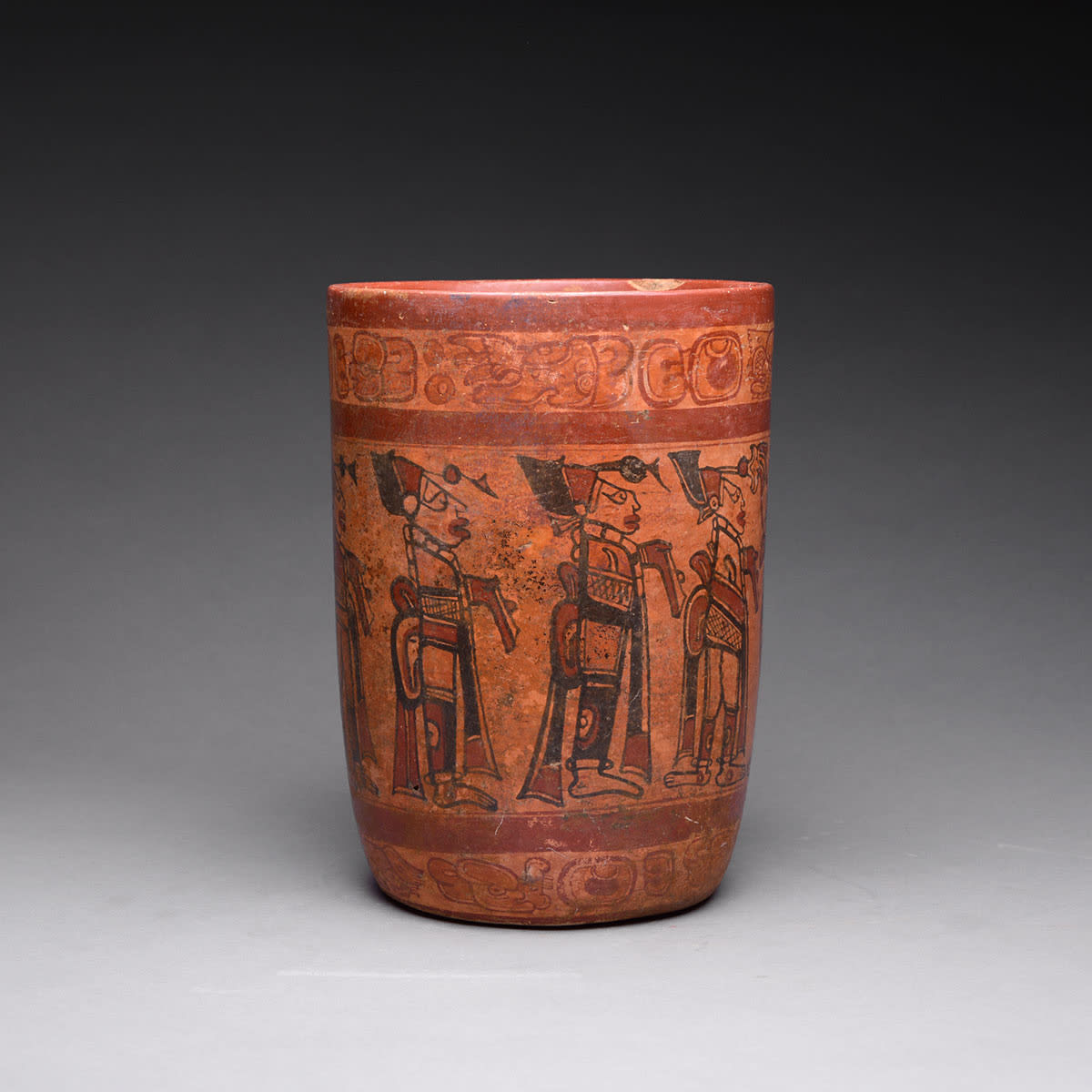Copador Style Mayan Polychrome Vase, 500 CE - 900 CE
Terracotta
height 21.6 cm
height 8 1/2 in
height 8 1/2 in
PF.4453
Mayan decorated ceramics reached their artistic peak during the Late Classical Period (ca. 500-900 A.D.) Vases were often made in a cylindrical shape characterized by black and red decorations on...
Mayan decorated ceramics reached their artistic peak during the Late Classical Period (ca. 500-900 A.D.) Vases were often made in a cylindrical shape characterized by black and red decorations on an orange ground, known as Saxche Orange Polychrome. Manufactured in a specialized pottery center, they exhibit a consistent design pattern often depicting extraordinary figures surrounding a center band. The key question is- what do these figures represent? In the Classic period the ruling elite were primarily involved in veneration of their ancestors, and though these ancestors may have acquired divine attributes, they were not regarded as so aloof and remote as to be inaccessible to humans. In order to be in touch with the venerable deceased, artists were commissioned to represent them in various forms. The figures on these vases have a divine aspect and yet are quite human as well. A characteristic of supernatural beings was their large semi-rectangular eyes, known as "Gods-eyes", and "God marks" or cartouches (an oblong or oval shape) drawn on the arm, legs and back. The figures on this very beautiful vase appear to possess these features. Notice the ovals in black around their ankles and their penetrating stare- all of them looking straight ahead with great concentration. It might be speculated that the figures are spirits of ancestors following a lead figure, perhaps a nobleman wearing an elaborate headdress, on his way to the other world symbolized by a mythical beast. Though its meaning may never be fully understood- this superb vase will always radiate a rare and mysterious beauty.



